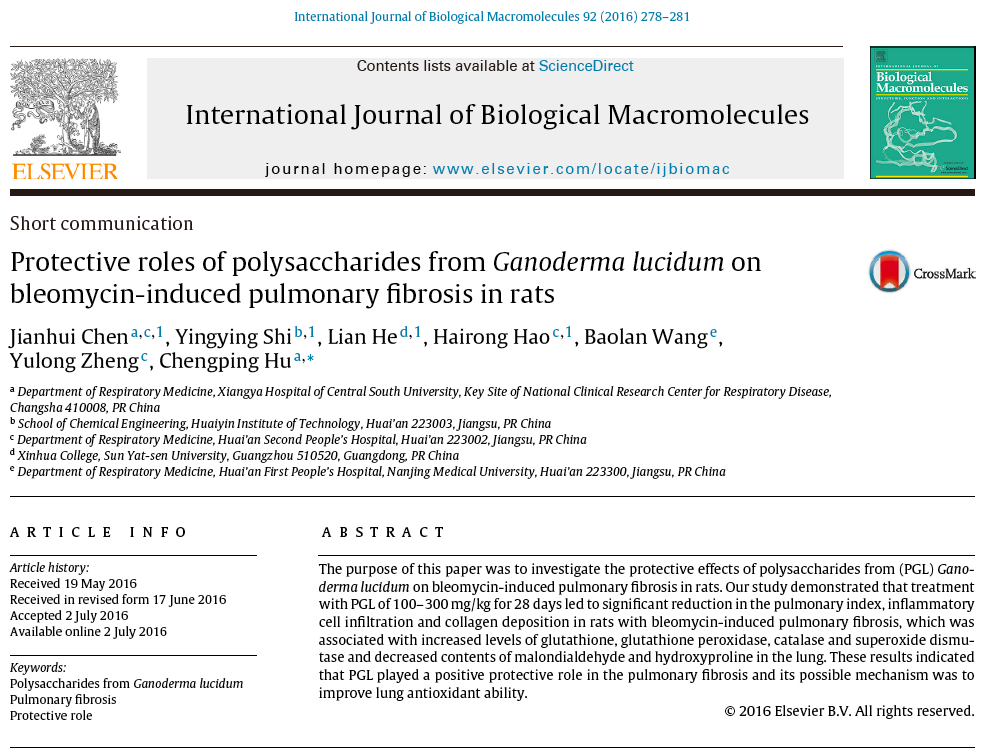
July 2, 2016 / Xiangya Hospital Central South University, etc. / International Journal of Biological Macromolecules
Text / Wu Tingyao
Some doctors once used “scouring pad” to describe the appearance of fibrotic lungs. At this time, the alveoli have lost the function of exchanging air, which seriously affects breathing. There are few specific medicines to treat. The five-year survival rate of patients with pulmonary fibrosis is lower than that of patients with lung cancer. Therefore, unless pulmonary fibrosis is discovered in the early stage, that is, when the alveolar wall is inflamed, there is a better chance of preventing or delaying the deterioration of the disease. Once it has reached the stage of tissue fibrosis, the treatment is very difficult. Early breathing disorder, shortness of breath and dry cough are often ignored by patients or misdiagnosed by doctors. Therefore, when most patients are diagnosed with pulmonary fibrosis, they have entered the middle and late stages of this disease.
Smoking, gastroesophageal reflux, environmental influences, genetics, gene mutations, drugs and other factors may cause lung damage and excessive inflammation for a long time, leading to the occurrence of pulmonary fibrosis. However, if the lungs can be protected with Ganoderma lucidum at the same time, the crisis of pulmonary fibrosis may be resolved.
Research conducted by the Department of Respiratory Medicine, Xiangya Hospital Central South University, in collaboration with multiple units, confirmed that polysaccharides from Ganoderma lucidum (PGL) can prevent and treat pulmonary fibrosis caused by the anti-cancer drug bleomycin. This result has been published in the International Journal of Biological Macromolecules in July 2016.



